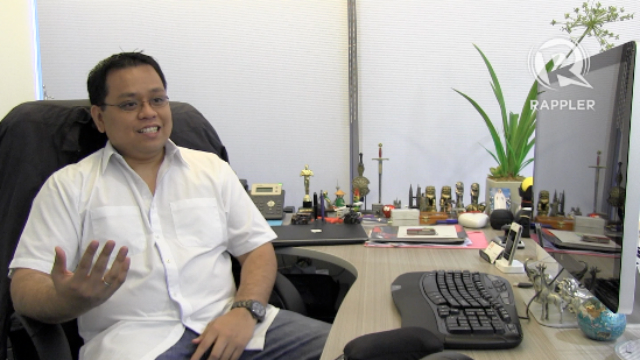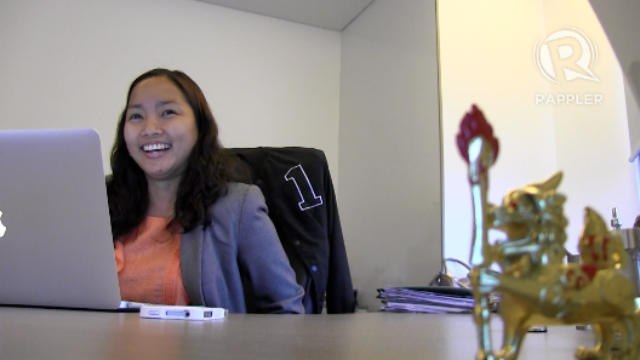SUMMARY
This is AI generated summarization, which may have errors. For context, always refer to the full article.

MANILA, Philippines – In 2006, 26-year-old RJ David began an experiment in data gathering to find out what Filipino consumers wanted. Programming the website himself, he kept features that visitors said they liked and eliminated those they didn’t.
Soon the site was getting enough traffic to justify having Arianne, the woman who would become his wife, quit her job. The couple devoted themselves fulltime to the website, working out of RJ’s parent’s garage.
Six years later, their brainchild is the most popular Filipino website, according to Alexa’s analytics. Classified ad site Sulit.com.ph is the go-to website for Filipinos to buy and sell everything from gadgets to condos and even cars.
From 2 employees they now have 76. Their membership ranks have swelled to 1.8 million. Page views have exceeded 200 million and, according to RJ, are growing an average of 70% year on year. The website is also heavily funded thanks to a 2009 investment by South African media firm Naspers, which now holds 75% of the company.

Rappler sat down with Sulit managing director RJ David for an inside look into what made his website so successful. We also asked the home-grown technopreneur what trends he sees in Philippine e-commerce today.
—
I’m interested in the Sulit success story. Why do you think you became a number one site?
When we started I’m really keen into developing features for our users. So at the start when we release something, we normally release the most simple version of the feature that we can create. Then from that, we’re going to get feedback from the users. Now from that feedback we’re going to [work again on the feature] then release it as fast as we can. Then we are going to get feedback again. This is the cycle that we did.
Now there are a number of advantages of doing that, number one we were able to create a product that was really tailored to our users, number two we were able to create a loyal group of users because they are seeing that suggestions are being applied on the website.
It sounds like rapid evolution.
Yes. It’s being agile. It’s in the DNA of the company. We embrace change. Number two, we are not emotionally attached to the features that we are releasing. What I mean is, if I release it today and tomorrow we see in the data that we collected that this is the wrong feature, it means the next day we are going to remove it. Even if we coded it for a month, we have to change it or remove it because that is what data is showing us. This is a very data driven company.
I get it. So in that way the company uniquely fits the Filipino mentality.

From what you’ve seen, what is it that Filipino consumers want? Can you list the top three?
Number one they are trying to find bargains, good deals. They are really very good in finding good deals. That’s why what we offer in Sulit is you can easily rank advertisements by price and then we also support sellers who are providing discounts to their users. So Filipinos really want to buy those.
Number two, Filipinos I believe are into new things. If there’s a new gadget around you can really see it on the search analytics. The day after iPhone 5 was released, iPhone 5 was our top search term. So it means Filipinos are really into new gadgets or new things. We are really at par with what is happening in the U.S. and other countries.
The third is Filipinos are really entrepreneurial. We met a lot of Filipinos who have sidelines into selling things. I have a lot of friends in Sulit who were working in a company before and now are SMEs, (or) have businesses of themselves because of Sulit. It’s a good thing that Sulit was able to provide a platform for them to be able to sell and offer their services.
What is the most surprising trend you are seeing today in e-commerce?
So for the past year we’re seeing 500 to 600 percent growth in mobile in Sulit. For the first 5 years of Sulit I haven’t seen that kind of growth in desktop so there is really something happening in mobile locally. And we believe in a couple of years Sulit will be a mobile company.
What do you attribute this trend to?
Number one it’s because of cheaper smart phones arriving in the market. Of course it’s being fueled by a lot of android phones everywhere. Initially what we’re seeing in the first few years is it’s really IOS or the Apple devices, which are dominating the market, but recently we are now seeing a big surge of these Android enabled phones being used to search the Internet. And of course the availability of fast internet mobile connections. The 3G (and) the LTE is really helping the push for mobile connection.
Are there unique aspects to e-commerce in the Philippines?
As of now, we can see that there is still some fear of buying online. The number one thing that we’re seeing is the trust issue. It is very difficult for someone to pay someone who he has not seen, [especially if he doesn’t know] if the product is real or if the product even exists. So the trust issue is a big problem locally. So for the past few years we’re trying to solve that trust issue.
When I speak to Filipinos they do say they like dealing with people in person. So how do you overcome that?
Number one we just have to embrace it, we just have to embrace that Filipinos have this fear of transacting online. That’s why when you will see our new tagline now, we have this ‘Hanap. Usap. Deal.’ It’s actually a tagline that embraces the fact that Filipinos want to meet you to transact with you. So you are going to find what you are looking for, and then you are going to talk, and then most probably you are going to meet and complete the deal.
But we are also trying to push Filipinos to learn how to buy online. So number one we put a feedback mechanism in Sulit wherein you can leave feedback on every seller. So every seller now has a feedback score that can inform buyers, potential buyers if the transaction before with this buyer was good or not. So that is number one.
Number two we have this what we call Sulit check. This is a voluntary paid service, wherein if I say my name is RJ David, I will submit documents that say, I’m RJ David, most probably passports, IDs. If I say that I work at (or) I own this company, most probably I’m going to submit billings that have the name of the company or the address of the company. And with Sulit check we are now giving extra ranking to the ads of these sellers. So in a way, we’re protecting our buyers because you are going to see first the ads of those that have Sulit check.
We also have a paid service where you are going to pay for a ranking. We have the belief that if you are a legitimate seller, you have the capacity to pay. If you are just trying to commit fraud, most probably you are not going to pay. So we are also pumping the ads of these paying sellers.
What percentage of your deals are fake? And what happens when you realize someone was not who they said they were?
It’s less than 1%. But we have a reporting system wherein buyers can report fraudulent sellers or what they thought were fraudulent sellers. And we have a team checking all those reports and we are suspending sellers that we have proved to be fraudulent.
Have you noticed the cases drop or increase over the years as you get more popular?
In a sense it increased with the volume of traffic. It increased together with the volume of traffic that we have but it still remains less than 1%, way, way less than 1%.
Numbers wise, how many transactions do you have a day?
We are getting around 10,000 new advertisements being posted on a daily basis. But since the payments are not being passed through us we cannot track exactly how many transactions are happening on the website. But we know that 10,000 are being posted daily. So way less than 1% of that (are unfavorable).

What are the demographics of your customer base?
In terms of gender it is equally divided between male and female maybe because we are offering general classifieds. So for example, for cars it’s dominated by males. For clothing and accessories, which is also a big category for us, it’s dominated by females. So if you look for the entire category it’s almost equally divided for both genders. In terms of age, we’re seeing it’s from 19-34 years old. That’s the majority of our users. For our sellers, it’s the same.
What is your vision for the next 5 years?
We have what we call the e-commerce value chain. The e-commerce value chain encompasses all the different activities that a consumer goes [through] when he buys something online – from knowing the product, researching about the product, comparing prices of available stores, paying it online, writing a review about it, and maybe if you are done with the product, selling it secondhand online. Then the cycle goes over again.
As of now, because the e-commerce industry is a very young industry in the Philippines, Sulit alone can actually cover the entire value chain. But we believe as the industry becomes mature there will be a need for the users to have a specific website for each of those sections.
If you are going to think about it, a classified site is usually at the end when you are going to sell your secondhand phone or secondhand laptop. In the future, we are looking to cover that entire value chain with different products available. It can be in partnerships with other companies, through our existing investors or through acquisition.
So you want to meet the niche needs yourself?
Yes.
How would you describe your competitive landscape today?
In terms of classifieds it’s really at a tough space in the sense that our competitor is also a heavily funded business and the competition in classifieds is all about market share.
We haven’t seen a market globally where there is a close number 1 and number 2. It is just a very big number 1 and a smaller number 2 and number 3. So this is a winner takes all market.
So that’s why when you ask about the business model, revenue is not our main priority, it’s market share that’s our main priority. We have to get the biggest part of the market to dominate it.
We believe we have about 70% of the market. The only big competitor that we have is AyosDito.ph. It’s more than 90% of the classifieds market (that we want to get to) by the end of 2013. Engagement will be the key to win this battle.
Any last advice you would give other startups?
I believe the culture is very important. You must be very specific on the culture you are going to create. It is the culture that will keep your team together. What I mean is, sometimes when you are growing big, you have to put structures, put procedures (and) put policies that can affect the culture of your company. Always think about the culture that you are building because it’s the culture that can fuel the growth of your company. If you change it you might be heading the wrong direction. – Rappler.com (Videography by Katherine Visconti and Devon Wong)
Add a comment
How does this make you feel?
There are no comments yet. Add your comment to start the conversation.